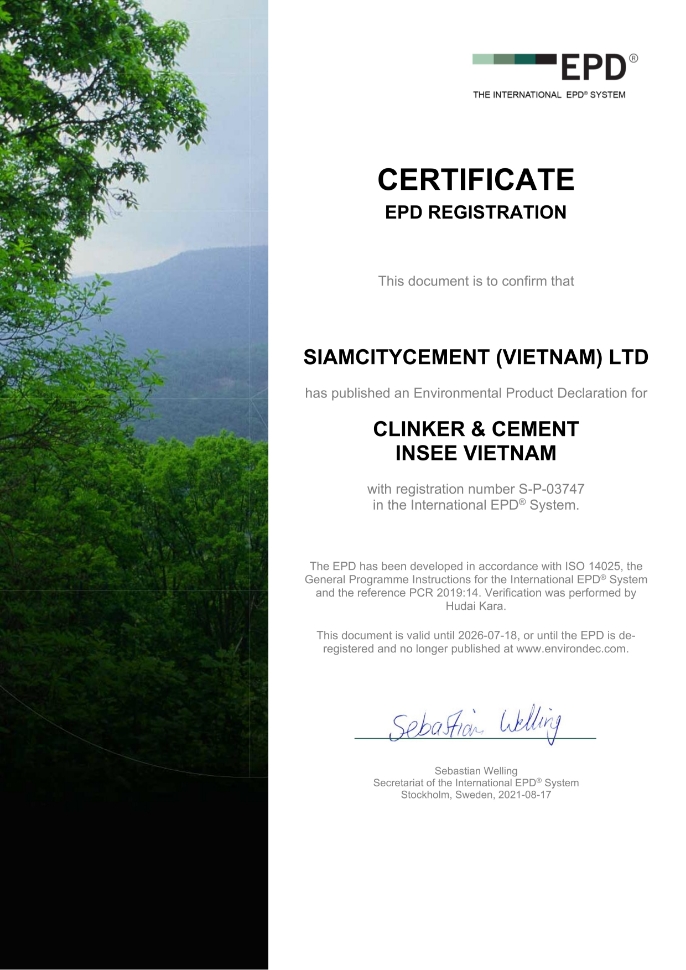The climate change issue has the potential to cause substantial damage to our planet, and Vietnam is particularly exposed to this negative impact. Therefore, maintaining the balance between production and environmental protection is our premier mission. To create confidence in our management of the environment, INSEE Vietnam has adopted the ISO 14001:2015 Environmental Management System as its guideline.
Inspired by the promise of a more sustainable and prosperous future for all, SCCC Group has devised the Sustainability Ambition 2030, in which INSEE Vietnam shared the same ambition. We develop our ambitious targets based on business operations at the local, in alignment with all business units across the Group, to ensure that as a Group, we can really make positive impacts on the environment.
According to Government regulations, the Companies must publicize environmental protection reports as well as environmental information. Following the request of Government, INSEE Vietnam uploads the information to related parties such as: customers, investors, surrounding communities, please visit the link to view

















